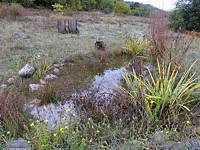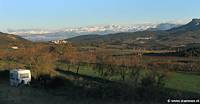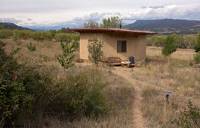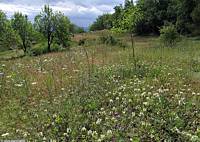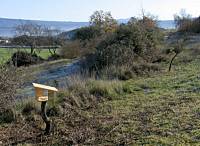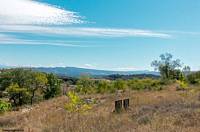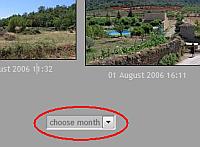|
|
Nature
Switched On
|
|
|
floristic catalogue
First entry weblog:
Latest entry:
The first years we used this caravan. |
Introduction:
- You are watching the old weblog of my Project Nature Switched On.
As of July 2018, it continued as a WordPress blog with more in-depth
and birdīs eye articles. The pages you are watching now will be
maintained as an archive for the first decade of the project. The
new weblog can be read here:
www.stammer.nl/wordpress . - March 2017. According to an article in the Heraldo de Aragon, the house is considered as one of the most original ones in Aragon. - On 13th of February 2017 I gave a talk, in English, in the Official Language School of Sabiņanigo, Huesca (Spain). A transcript of the talkshow can be read here. It gives a brief overview of most of my activities on the project over the last 10 years. - More news items here. Introduction from September 2012
This is the story of a terrain (12.000 m2) bought in the Spanish
Pre-Pyrenees in the summer of 2006. |
|
|
This pond was installed in the centre of the zone in 2007. |
||
|
|
Our plan is to live more or less
permanently on the terrain, as ecological and simple as we can
'afford' ourselves. At the moment of writing this upda
|
|
|
|
Prunella laciniata is typical for dry chalk
grasslands. |
|
|
A major inspiration and influence on my ideas about gardening and landscape
architecture is Louis G. Le Roy. He puts the emphasis on the process
not on the result. In this process of the development of a garden or
landscape the influence of the human being should be very modest, equally
important is his role as a passive observer and appreciator. In nature
(as in life) everything flows and instead of wanting a fixed situation
to continue (with a lot of effort like in a traditional ornamental garden)
we must let nature go its
own way, finding its own solutions in the succession from The title for this
website (Nature Switched On) was partly taken from one of his first
and most important books:
Natuur uitschakelen - Natuur inschakelen (Switch Nature On or Off). For more information about Le Roy and his ideas, have
a look here: www.stichtingtijd.nl
|
||
|
On the terrain ofLeRoy's Ecocathedral in Mildam,
the Netherlands. |
||
|
So we have proposed ourselves the following guidelines:
|
||
|
Looking south-east. 25 Dec 2006 11:25. |
||
|
In
September 2012 I started another design for this website. Formerly
these pages were comparable to a weblog, now the accent wil be even
more on the photographic content and the presentation will be in the
format of a photo gallery, similar to The change in presentation coincides happily with a
change of camera. The images of the old weblog were made with my Canon PowershotPro 1
camera (a 2004 model with an exceptionally good
lens), from now on photos will be made with my new Canon 60D reflex.
The old weblog will of course still be available here and also via the navigation buttons ('choose month') on the gallery page. The new presentation with its focus on the visual and the chronology will help to experience the project as a real process, a voyage without end. We hope you will enjoy it and that it will stimulate you to switch on nature in your own 'zone' and perhaps also to interact with this project. Feel free to offer your suggestions, ideas and questions. In the menu at the top and bottom left corner you can navigate through this site. The 'introduction' is what you are reading now, the 'floristic and faunistic catalogues' refer to a list of species (in 3 languages) found on the terrain, with photographs taken on different dates and some information about abundance and distribution. The 'contact' button will give you the opportunity to get in touch with us via e-mail. The 'index' button offers a quick access tool to different dates and topics treated in the weblog. The 'map' refers to a collection of systematic images of the terrain with the main features. The 'gallery 1' refers to the old style gallery with all the images of the weblog up to May 2012 in chronological order, while 'gallery 2' leads you to the new style gallery with photos and commentaries from September 2012 onwards. The 'first and last entry' buttons give access to all the entries from the beginning in 2006 up to the present. A version in Spanish can be read here. Andreas Brons, September 2012
|
||
|
The area of the ponds. |
||
| The important 'choose month' navigation button on the gallery pages. | ||
|
floristic catalogue
First entry:
Latest entry:
|
|
|
|
|
||
|
|
